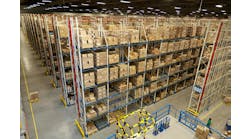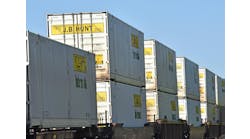Shipping Management: Need Help Meeting Retailer Packaging Demands?
I was walking through my local, big-box home improvement center recently when an end-of-aisle display caught my eye. I was not attracted to it for reasons the company's marketing people had hoped. What caught my interest about this load of AA batteries was the fact that it was sitting on a quarter (20 x 24-inch) wood pallet. Big deal. Just another end-of-aisle display to the untrained eye. Actually, this is not such a common sight in an American retail store.
I was studying the pallet when the friendly store clerk asked if I needed help. Under her breath, my wife commented that I was beyond help. My feeling was that transport packaging in these big stores might be moving from its traditional utilitarian role of protecting the product toward something more slick and clever.
Ever vigilant for a transport packaging story, I began to look around to see what other visible forms of transport packaging were being driven by the merchandise and the retailer.
The search didn't take long. Across the street at my favorite wholesale club the influence of transport packaging making life easier for the retail shopper was even more evident. Here, lots of things were displayed in pallet loads. All of these products required protection and containment. The method of choice appeared to be the use of paperboard corner posts in a variety of shapes and sizes, and stretch film.
Display pallets are becoming the norm in these big box stores. Splintery wood pallets have been replaced by clean wood, plastic and corrugated material. Looking back upstream, it's easy to see that manufacturers or distributors who prepare products are being pressed to make things ready for the retail floor. This has to be, in large part, so the retailer can save labor. I doubt such vendor compliance is translating into labor savings for the manufacturer or distributor.
Vendor compliance, however, is nothing new. Demands for proper bar code formats, and now radio frequency identification tags, challenge the manufacturer every day. In some industries, automotive for example, suppliers can't even get in the game without complying with manufacturers' packaging requirements.
Now, the new challenge for transport packaging people at the end of the line is how to respond to the demands and variations of the big guys. Manufacturing lines and packing stations vary among manufacturers and are often locked in place. Different packaging requirements of the major retailers can pose demands that the equipment and people doing the final preparation for shipping might not be ready, willing and able to make.
How can manufacturers and distribution centers adjust to these changes and respond more quickly to the demands of different retailers? One answer is to use contract packers or co-packers. Like turning to third-party experts for other services, using a contract packer makes sense when demands from the retailer tax your time and talent.
If you find yourself in this bind, a good place to look for help is the Contract Packaging Association (Naperville, Ill.). The organization has been around for more than a dozen years and works to bring some consistency and recognized standards to this rather fragmented genre of packaging professionals.
Here are a few tips to get your search for a contract packager started:
- Find someone convenient to your manufacturing facility to keep transportation costs manageable.
- Since you're paying for expertise, hire experts. Be sure the packager understands your product and your customers' requirements.
- When you're talking with a potential partner, make sure they are listening to what you have to say, not just waiting for their turn to talk. Innovative solutions arise from ideas, not from what's already been done.
Using a third-party provider can give you the flexibility to respond to the mercurial demands of retailers. As experts, they are cognizant of what's going on in the packaging world and can find ways to save time and material.
Meanwhile, I found the bead-chain for a light-switch pull I had gone to the store for; $1.88 packaged and protected so well that a gorilla couldn't open it. Might be a story in that, too.
Clyde E. Witt
[email protected]


